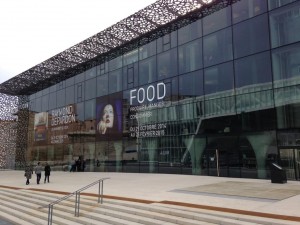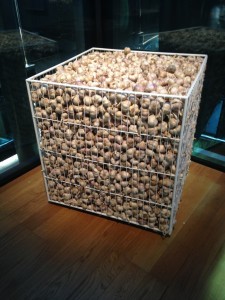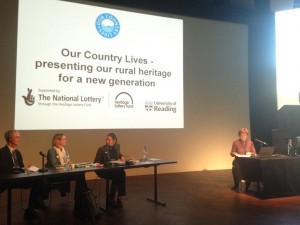Ollie Douglas, Assistant Curator at MERL, reflects on the common challenges faced by museums similar to MERL around the world, after attending the International Congress of Agricultural Museums.
At the beginning of November, Isabel Hughes, MERL Curator, and I travelled to Marseilles to present MERL’s latest ideas to an international audience. Our presentations formed part of CIMA 17—the 17th International Congress of Agricultural Museums—organised by the International Association of Agricultural Museums, of which MERL was a founding member. Indeed, back in 1976 our predecessors hosted CIMA 4 and the Museum’s founding father, John Higgs, spoke about ‘the role of agricultural museums in the advanced and developing countries.’
This year’s Congress was held at MuCEM, the Musée des civilisations de l’Europe et de la Méditerrainée. This extraordinary institution incorporates the collections of the former Musée National des Arts et Traditions Populaires (founded in Paris in 1937) into a modern endeavour to curate the shared culture of southern Europe. The displays are as ambitious as the architecture, beginning with the longue durée of agricultural origins and the earliest Middle Eastern farmers, exploring the complex religious history of the Mediterranean, and examining the diversity of present-day Europe through contemporary art (including a temporary exhibition focussed on Food).
The packed conference programme included too many papers to mention but two speakers in particular caught our attention, their work resonating with things that we are also thinking about. Surajit Sarkar of Ambedkar University spoke of how the mechanisation of Indian farming is driving proposals for a National Museum of Agriculture in New Delhi. Indeed, Surajit and his colleagues face similar challenges to those addressed decades ago in many European museum projects. They are salvaging traditional approaches to farming before they disappear, just as MERL sought to do in the 1950s. Several generations from now our Indian partners will face the challenge that we and many others now face, of a visitor base detached from the countryside and of technologies beyond living memory. These same challenges formed the basis of Isabel’s contribution. She introduced our redevelopment plans and how we plan to deliver a MERL focussed on the strength of collections to inspire and engage audiences unfamiliar with rural life, whilst also catering to those who know the countryside well.
Elsewhere, Barbara Sosic spoke of recent activity at the Slovene Ethnographic Museum, of how they seek to cater for audiences both online and in the Museum’s galleries, and of how their content resonates with people from rural communities. Their dynamic, user-centred approach chimes with the direction that we at MERL are taking, as we become more open to programmes of co-creation and co-curation and increasingly aware that museums cannot work in isolation. My own presentation used recent projects at MERL to explore the changing role of the curator and how inclusive and open-minded approaches might reap dividends in terms of reconnecting museums of agriculture with rural stakeholders, as well as researchers and members of our more immediate and local communities.
These words from John Higgs reveal just how little has changed since 1976 and how the same challenges of contemporary relevance and meaningful engagement that drive our work today also drove our international peers in the past:
‘The changes in institutions and patterns of rural life, the crops that grow and were grown, the climate and ecology and the changes in living conditions when imaginatively interpreted all have a part to play in providing a wider opportunity for learning. Agricultural museums have hardly begun to face the challenge … of a ‘learning society’.’ (Higgs, 1976)
Back at home once again, we hope that Our Country Lives will help us to address these challenges and many more besides. The executive board of the International Association of Agricultural Museums (of which Isabel and I are now members) are set to hold a meeting in Reading in 2015, offering a perfect opportunity to showcase our work during development, and we look forward to revealing its successful outcomes at future Congress gatherings.






